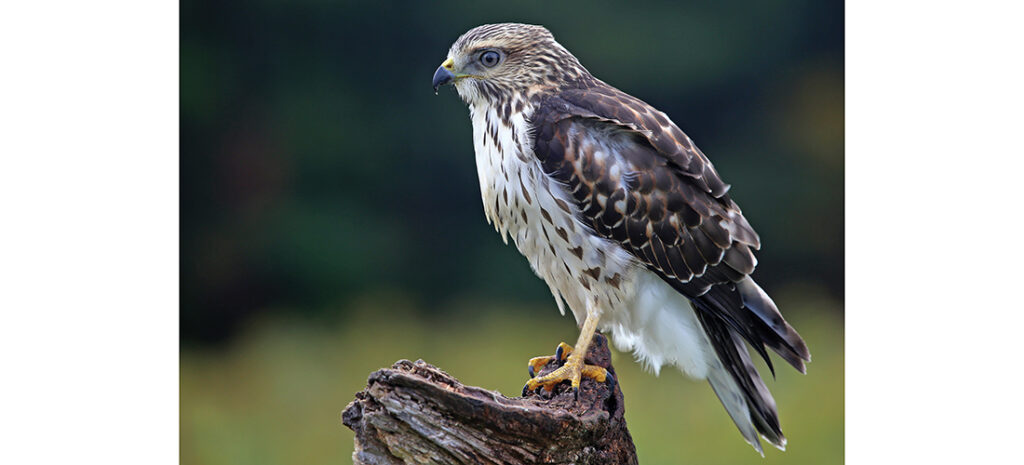Birdwatch

The Hidden Hawk
Looking for the elusive broad-winged
By Susan Campbell
All of us are aware of hawks in the landscape — no matter where in North Carolina we may be. We are fortunate to have a diversity of raptors in our state. These birds are formidable hunters that use their talons to grab unsuspecting prey of varying kinds. The most noticeable are larger species such as red-tailed hawks that sit in the open on stout branches or snags, and in the absence of natural perches, can be seen on fence posts or telephone poles. But there are hawks that are more secretive and spend most of their time hidden. One of these is the broad-winged hawk. This species is smaller in size and is more likely to be found in swampy woods. Happily, they are now returning from their wintering grounds in Central and South America.
These birds seem to enjoy the diversity of prey in wetter habitats. Mind you, I do not see these diminutive but magnificent birds regularly but, as with so many species during the breeding season, I hear them advertising their presence. Their call is a high-pitched whistle, unlike any other bird in our area. Being heard and not seen may be a strategy for these birds, given their smaller size: close to that of a crow. Often living within the boundaries of other, larger hawks — such as a red-shouldered — being less visible is a distinct advantage.
Not surprisingly, given their size, broad-wingeds often go unnoticed. They are birds of the forest and, given their dark coloration, blend in well with their surroundings. But that doesn’t mean they’re drab. These stocky little hawks have reddish heads and handsome barred underparts that match their boldly barred tails. Only the keenest of birders will likely spot them, unless they’re migrating, when they congregate in large numbers (even into the thousands) in certain locations. At these raptor “hot spots” the birds can be seen soaring in circles, forming large “kettles” on updrafts, gaining altitude early in the day. Broad-wingeds, like many other hawks, use upper air currents to make their long journey a bit easier. Unlike most of our local hawk species, these birds move back and forth between the eastern United States and central to northern South America during the year.
In the Piedmont, the species can be found in hardwood or mixed pine/hardwood forest. The courtship ritual is breathtaking, involving “skydiving” — circling high in the sky followed by a rapid dive. The pair will nest in the lower limbs of a mature tree, usually close to water or some sort of opening in the canopy. The parent hawks will feed their young everything from mice to frogs, lizards to large insects. Since broad-winged hawks are easily disturbed, they are rarely seen outside of rural areas.
Should you be out hiking at Haw River State Park in Browns Summit or at, say, Weymouth Woods Sandhills Nature Preserve in Southern Pines, keep an eye out — as well as an ear — you just may spot an elusive broad-winged. OH
Susan Campbell would love to hear from you. Feel free to send questions or wildlife observations to susan@ncaves.com.
